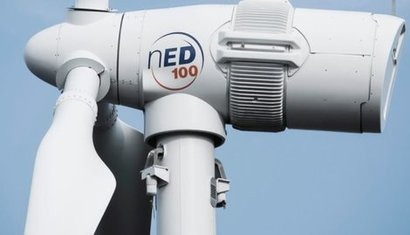
According to Norvento’s recent market projections, landowners and commercial users can benefit from considerable returns from wind turbine installations, including in the form of savings on energy consumption. Furthermore, as technology and installation costs fall, the role of on-site wind energy generation is going to become even more significant over the next decade as electricity prices continue to rise.
Norvento shared these findings last week after a further Feed-in Tariff (FiT) degression that has seen the tariff for 15 kilowatts to 100 kilowatts turbines fall to 8.54 pence per kilowatt hour. Although early adopters of medium wind were able to use the high FiTs to offset the Levelised Cost of Energy (LCOE) – the lifetime unit cost of energy produced by their turbines – and, in many cases make a healthy profit from tariff payments, the new reduced tariff scheme will limit these possibilities.
However, as technology and installation costs have fallen, and, following improvements in turbine efficiency, the unsubsidised LCOE for on-site wind power production is set to reach grid parity with, and eventually fall below, retail electricity prices for the first time this year, according to calculations by Norvento.
This LCOE is also set to continue falling even as electricity prices rise. Norvento’s projections, based on 30, 20 and 10-year averages, suggest that electricity prices will rise by as much as 40 percent (a 5.5 percent year on year increase) by 2025, while the total cost of on-site distributed wind energy production will fall by between 20 and 40 percent in the same period. This will in turn give independent power producers, such as landowners and industrial users, an opportunity to significantly reduce their long-term energy costs and hedge against rising electricity prices. This is especially true for those producers who can maximize their on-site consumption of energy.
“In the mature, low-to-zero subsidy market, we’re likely to see a fundamental shift in the way medium wind projects are deployed by both landowners and commercial users” said Ivo Arnús, Director of UK Business Development, Norvento. “In practice, that may mean an end to the days of profiting from high levels of Government subsidy, and the subsequent introduction of a more measured, long-term pattern of medium wind development, where turbines are used to counteract the effects of increasing electricity prices.”
Mr Arnús added that the maturity of the sector, coupled with the arrival of grid parity, opens up a whole new era in UK medium wind energy development. Norvento expects increased interest from users with high on-site energy consumption willing to benefit from the potential energy savings to be made. The company is also seeing funders becoming ready to engage in long-term power purchase agreements with commercial energy users that can offer strong financial covenants and a rent-free space to operate a wind turbine.
Norvento manufactures the nED100 wind turbine and is a pioneer of innovative on-site generation technologies. The nED100 has been specifically designed with the UK market in mind. Since its launch in 2013, Norvento has been working hard to reduce the cost and boost the operational efficiency of the turbine, including the launch of a 24-metre rotor to increase energy production by 10 percent.
For additional information:

